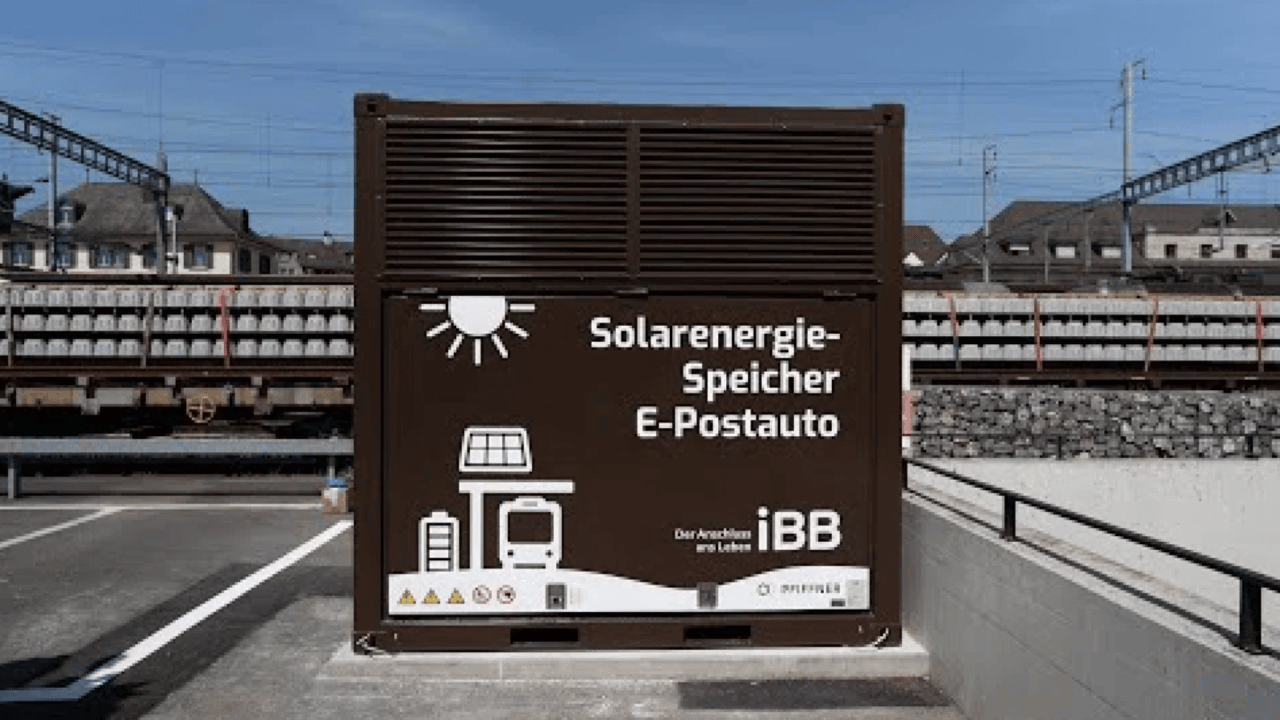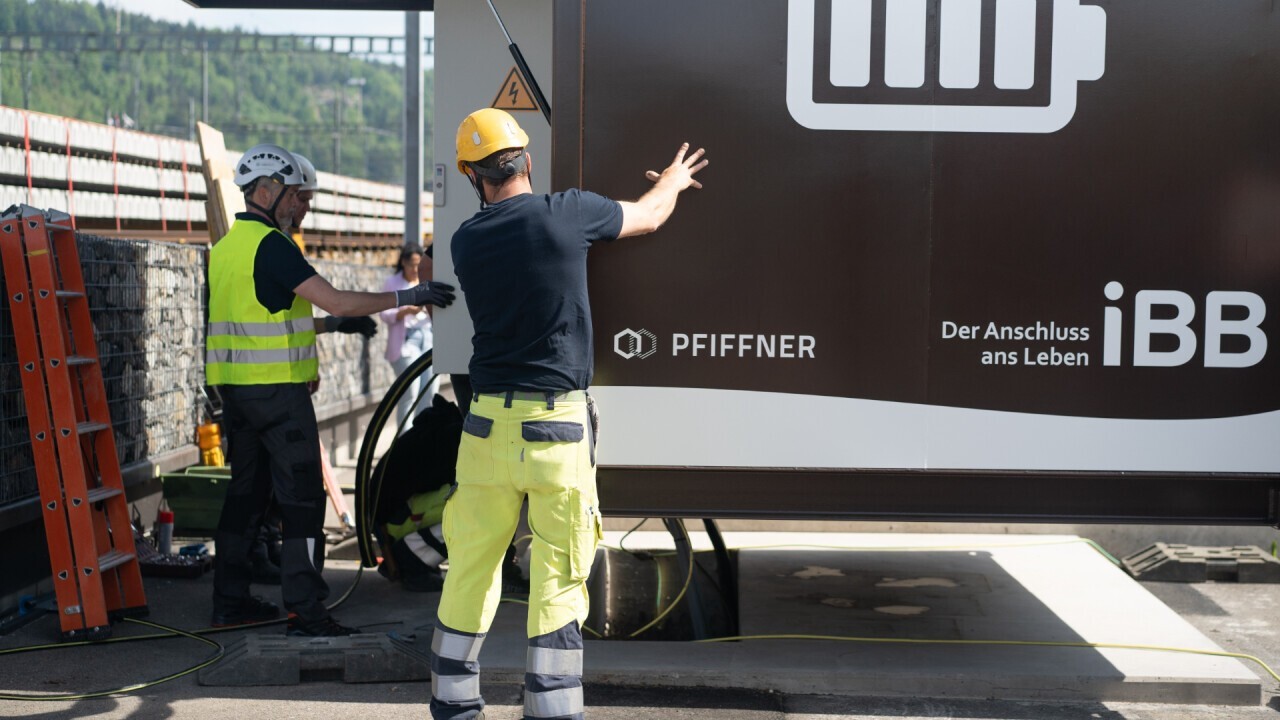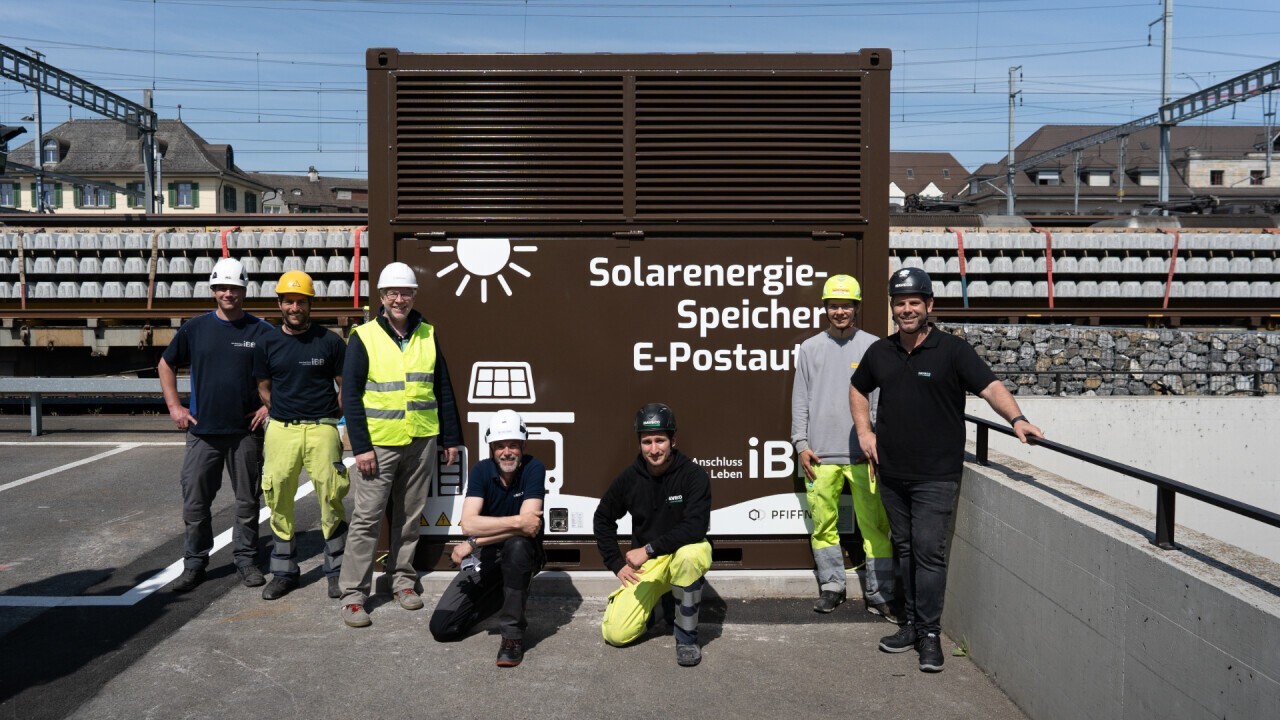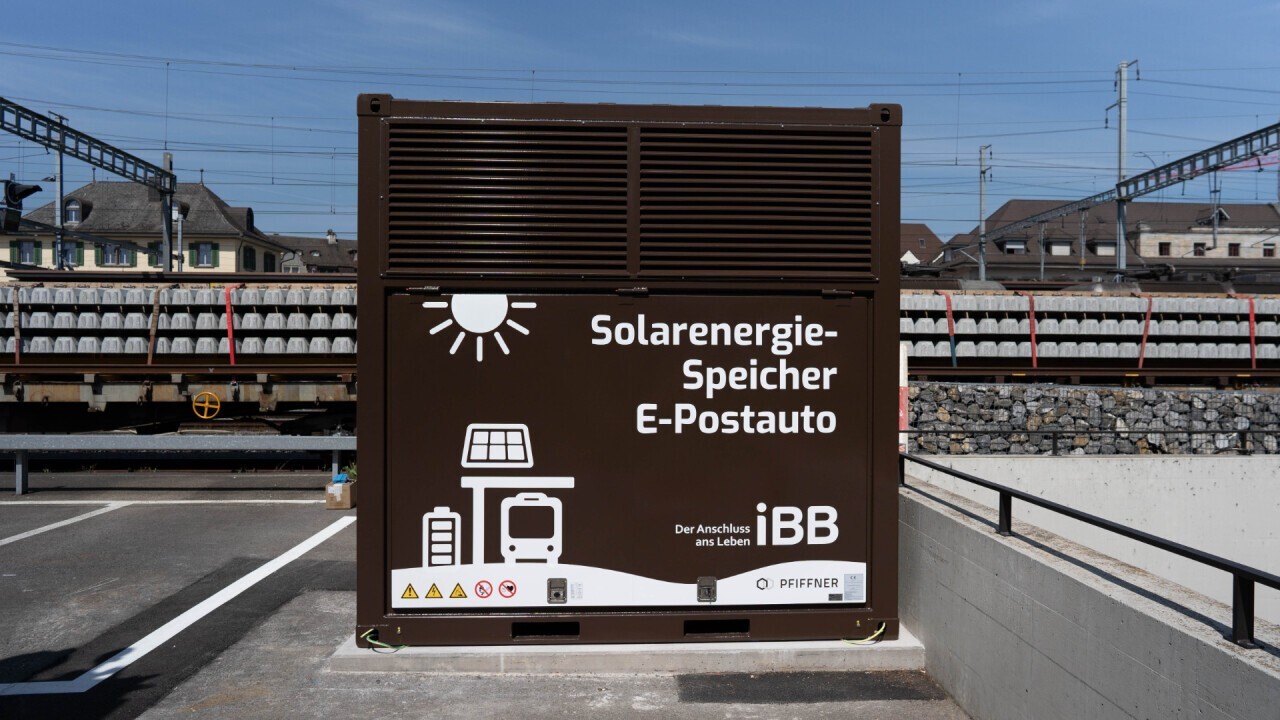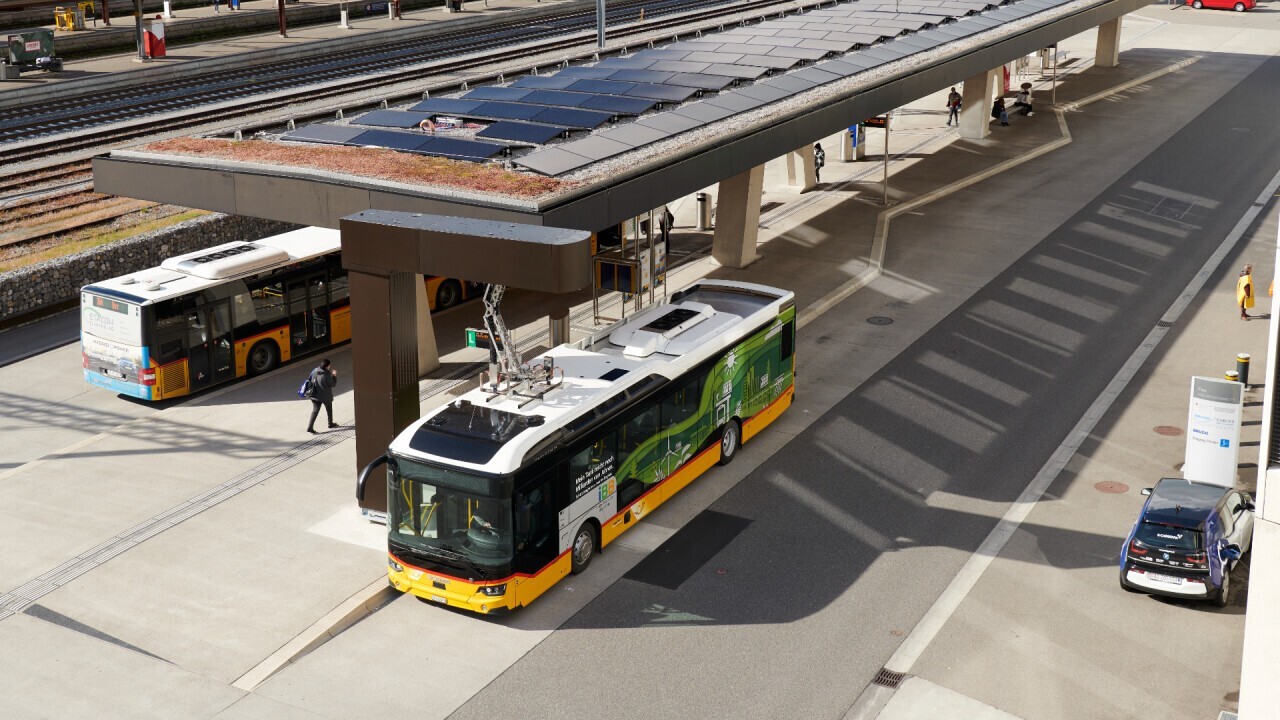Solar Energy Storage for E-Postbus in Brugg
Today, the first Swiss charging station for E-Postbus is located in Brugg - with a direct connection to modular battery storage and a photovoltaic system. The innovative, holistic project was realized by several partners together with PFIFFNER.
Invest sustainably - create the energy turnaround!
Battery storage system solutions are considered an essential key element in the changing grid structure of energy suppliers. The Pfiffner Group decided to include this critical, technologically sophisticated segment in its portfolio a year ago. Now an important milestone has been reached. Pfiffner Systems has successfully implemented the first battery storage project for IBB Energie AG, Brugg.
The goal of the energy supplier was to use the solar energy generated locally on the roof of the bus terminal at the Brugg train station for electric buses of PostBus AG, employing a holistic energy concept. Thus, the photovoltaic energy from 242 solar modules is temporarily stored in battery storage directly on-site and, if necessary, charged into the e-buses using fast charging of up to 300 kW. This takes place during a stop of the e-bus lasting only a few minutes while passengers are getting off and on.
On sunny days, the e-Postbus runs entirely independently of fossil energy. The electric bus thus saves 11,200 liters of diesel and 36 tons of CO2 annually. Without battery storage, the e-Postbus would have to draw electricity from the grid. Or - depending on the sunshine - wait longer at the bus stop. Grid expansion might also be necessary. With the right amount of sun, the relatively small photovoltaic system with 88 kWp is sufficient to cover the daily energy needs of the electric bus completely.
An energy management system (EMS) monitors and controls the entire battery storage system. In addition, the EMS considers the payload, weather data and the current timetable. It was developed jointly with the FHNW School of Engineering as part of a research project.
Suppose the e-bus lines are expanded, and additional charging stations are required. In that case, the capacity and power can be doubled at any time - thanks to the open-system solution - with additional battery modules and inverters. In other words, the battery storage grows in line with the additional requirements for operating the e-bus.
